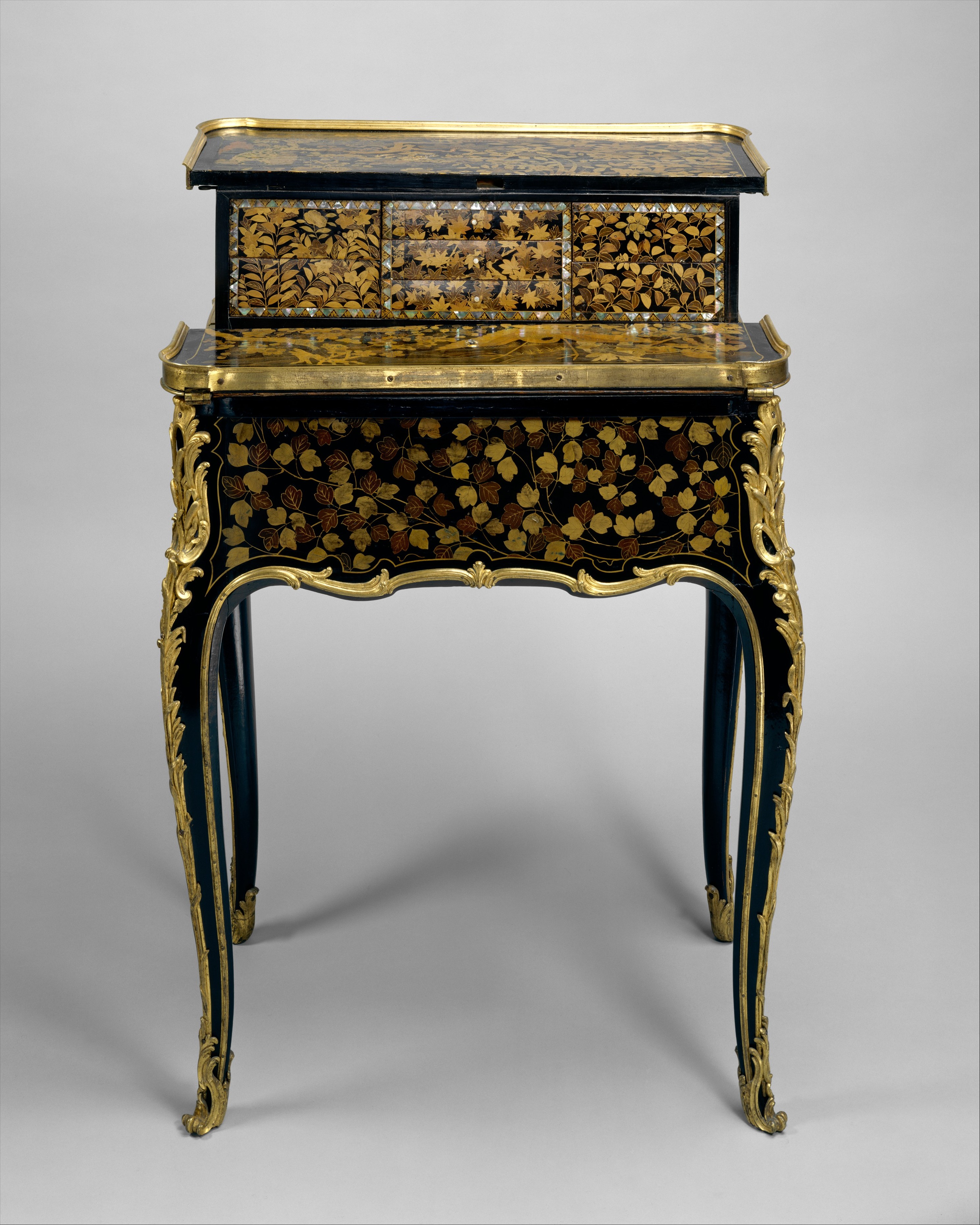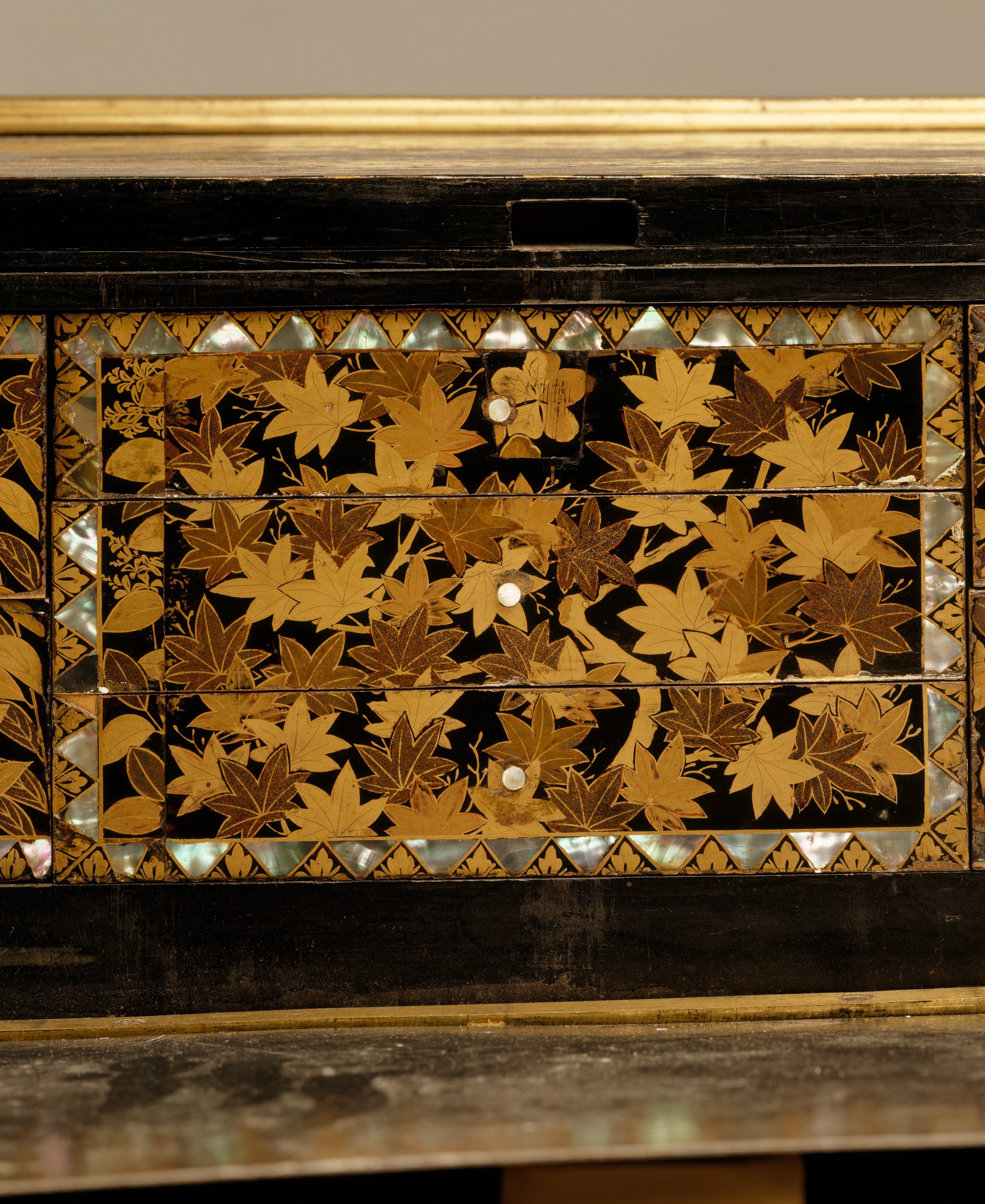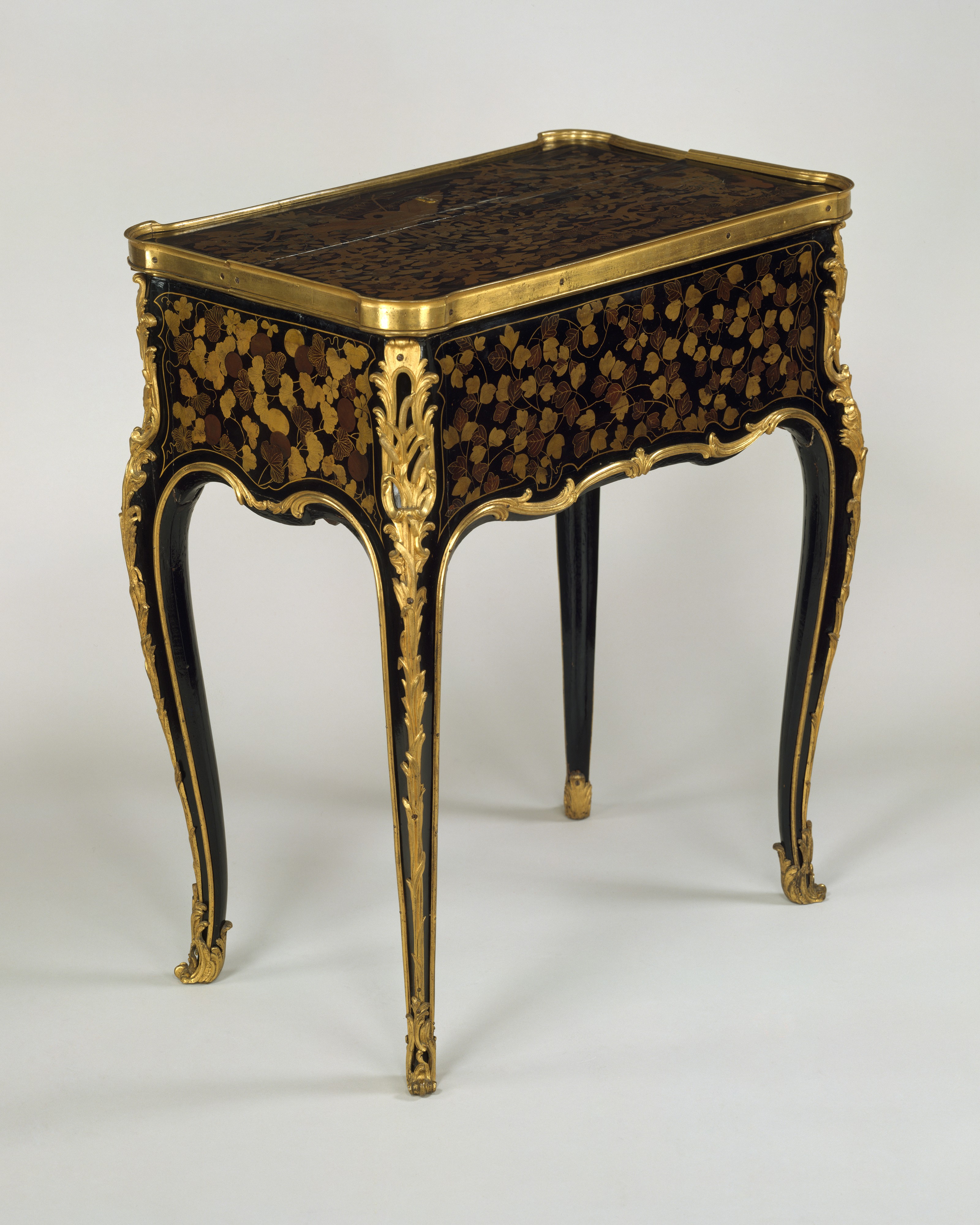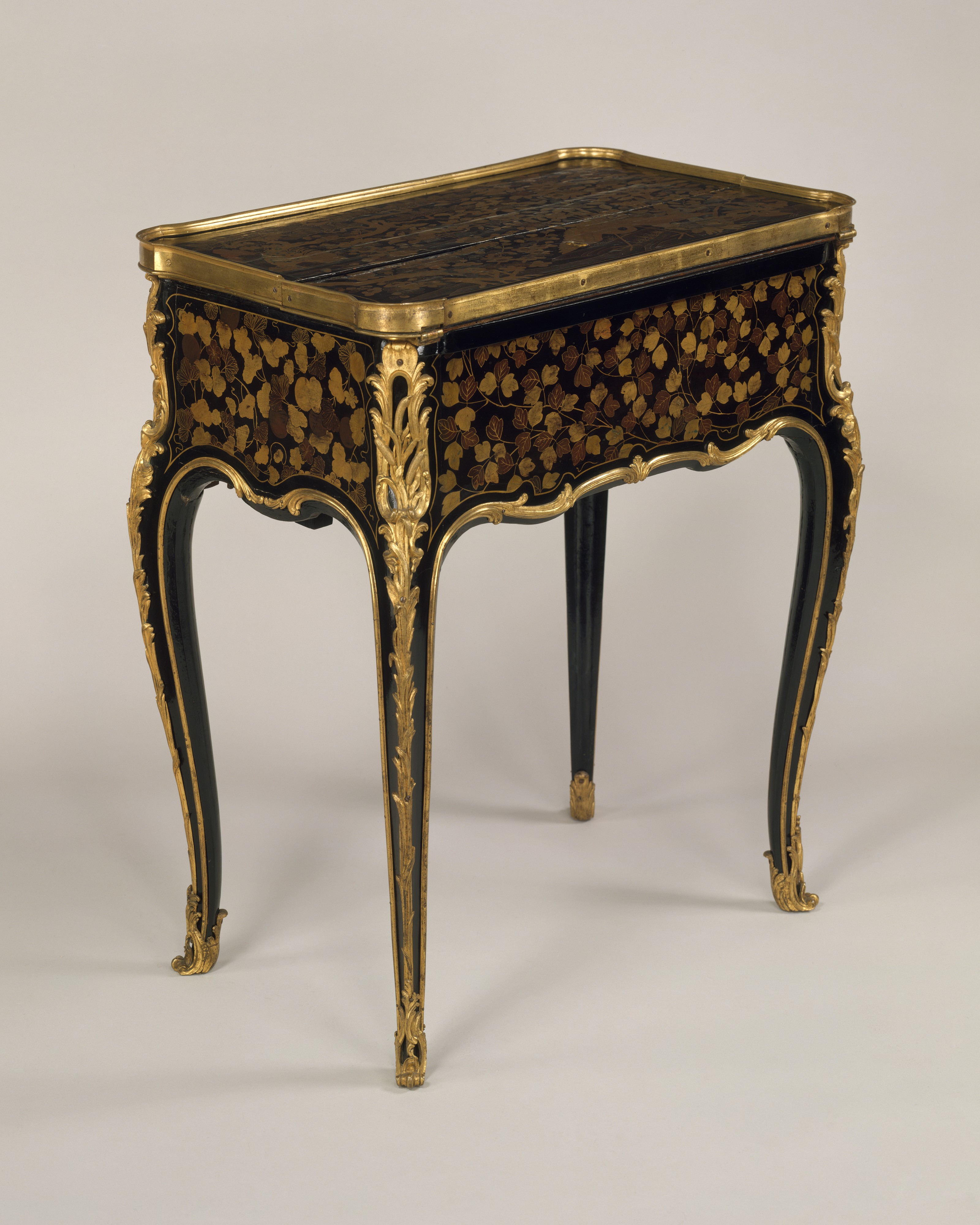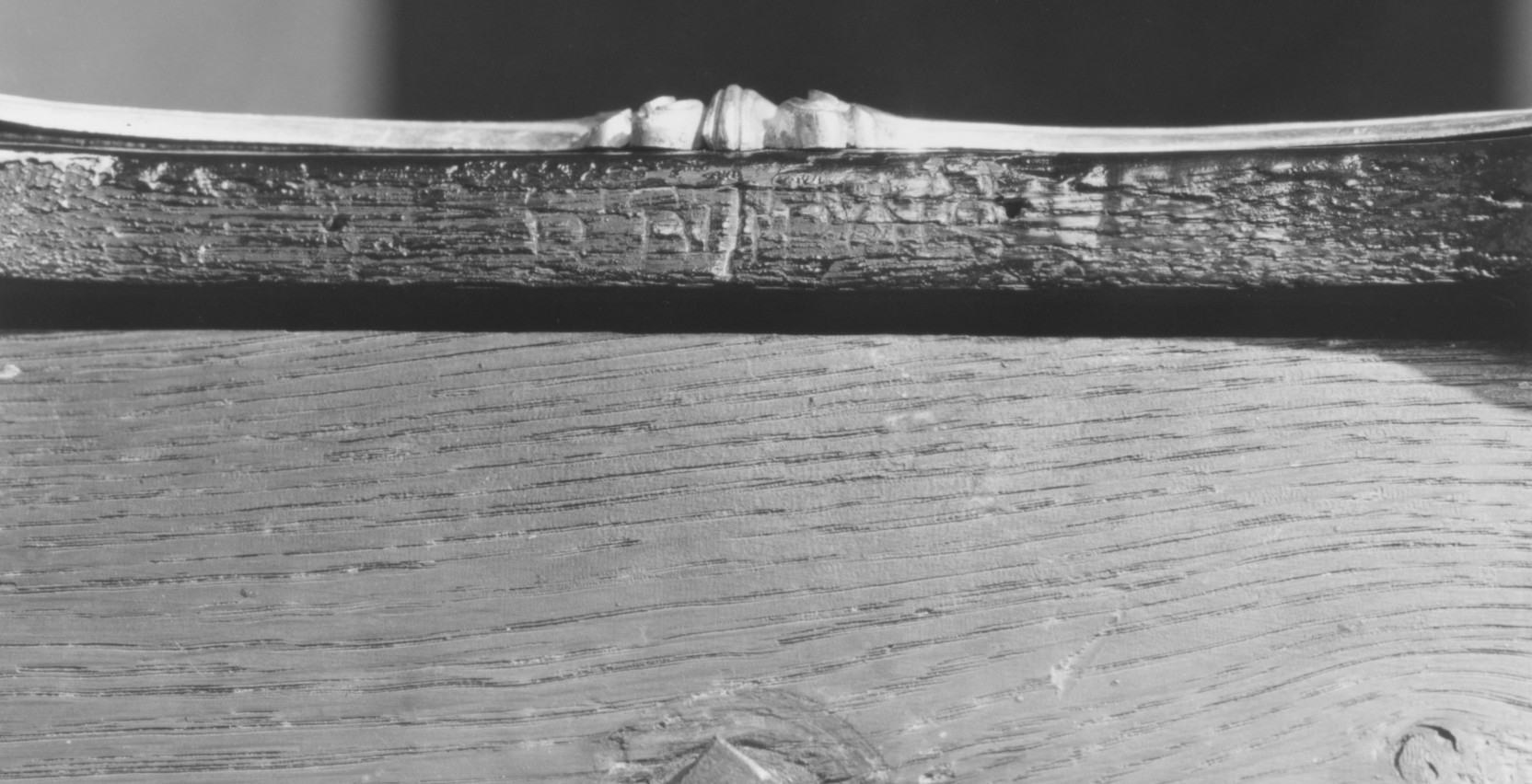Mechanical table à la Bourgogne
Mechanical tables of varying degrees of complexity were popular from the mid-eighteenth century and were made by several prominent ébénistes, in particular Jean François Oeben and Jean Henri Riesener. This table, known as a table à la Bourgogne, is stamped R. DUBOIS and dates to ca. 1760. The elegant curves of the legs and lower edge are emphasized by the delicate mounts. These, in turn, are echoed by the fine gold line delineating the lacquer panels while the gilded mounts encasing the feet add further refinement.
The front half of the top opens to reveal a writing surface which is covered with the original brown leather. The rear section of this surface comes up mechanically when activated by a spring mechanism giving access to three tiers with a total of seven drawers.The corner mounts with bulrushes and foliage are found on pieces of furniture made by other makers. They were probably purchased from a Parisian bronze maker and could be acquired by any ébéniste or were provided by a marchand mercier or dealer in luxury goods.
About 1730, it became fashionable for ébénistes to mount furniture with either actual lacquered panels from East Asia or japanned panels. Here, Japanese lacquer dating to about 1620 has been reused as a veneer. The table top was probably originally the fall-front of a Namban cabinet sawn in half horizontally. The sides back and front of the table were most likely the sides, top and back of the same cabinet, while the inside of the door and of another portion of the carcass may have been used for the rising section. The drawer fronts possibly derive from those of the dismembered cabinet – in some cases they retain their original pearl-shell border. The piece of lacquer used for the central tier of drawers was too narrow, so that it had to be enlarged with a separate strip on the left-hand side.
Relatively little is known about this cabinetmaker who stamped his works R. DUBOIS. Elected maître ébéniste in 1757, he worked as both a cabinetmaker and a dealer on the rue Saint-Honoré where he specialized in the sale of toys and pieces of mechanical furniture.
He was probably a relative of the better-known René Dubois [see 1982.60.57] who, with his father Jacques [see, for instance, 1974.356.160] used the stamp I. DUBOIS.
Due to rights restrictions, this image cannot be enlarged, viewed at full screen, or downloaded.
This artwork is meant to be viewed from right to left. Scroll left to view more.


